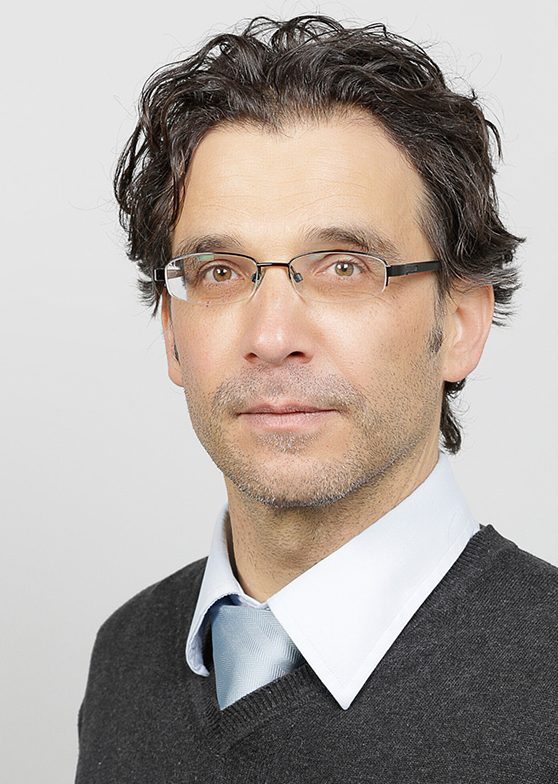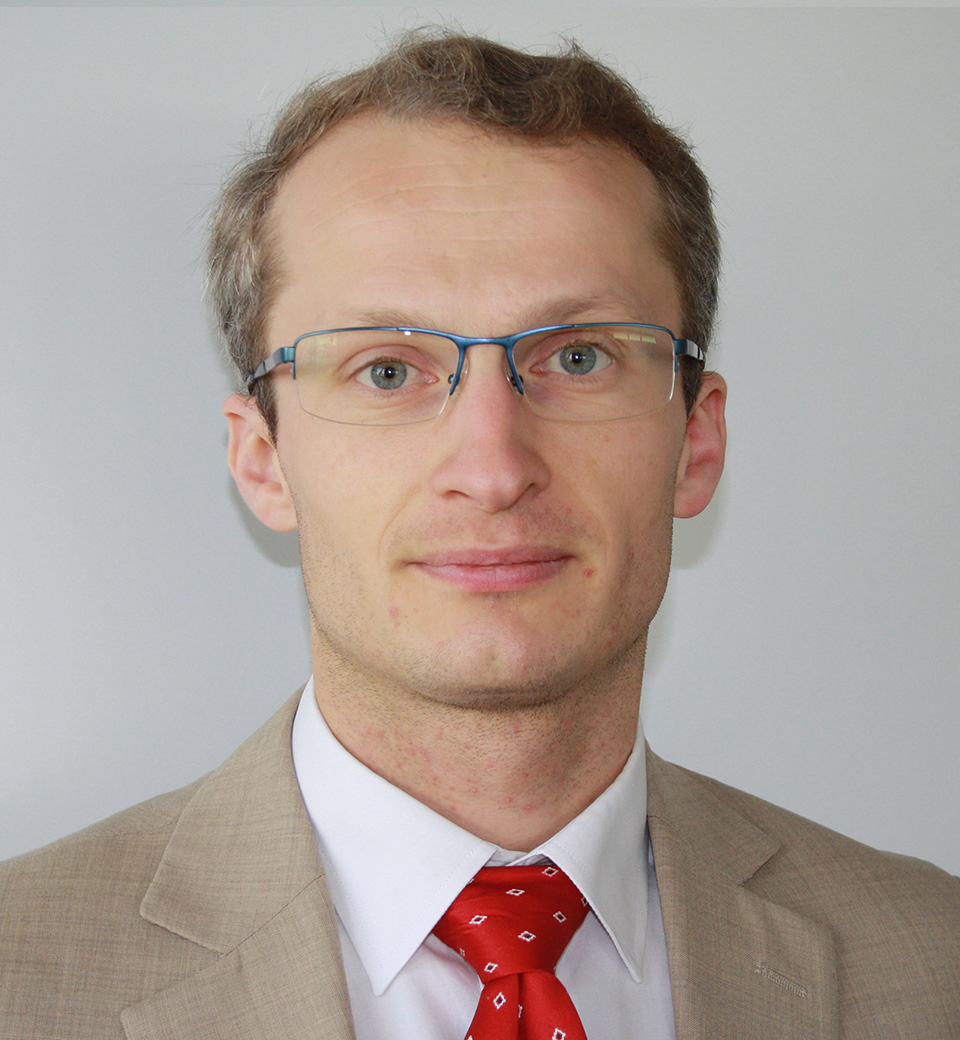An interview with Hartmut Welck and Matthieu Grosjean, experts in international innovation management at Steinbeis 2i GmbH (S2i)
Innovation and internationalization – two areas of focus for the experts at Steinbeis 2i GmbH, which works in close collaboration with the Steinbeis-Europa-Zentrum. As members of the Steinbeis Network, the Steinbeis specialists work under the umbrella of the Enterprise Europe Network, a stepping stone into Europe for companies, research institutions, universities, public administration, and politicians. Hartmut Welck is a senior project manager and the first port of call when it comes to bioeconomics, nutrition, industrial biotechnology, and innovation management. His colleague Matthieu Grosjean is responsible for projects revolving around smart cities, transportation, logistics, and electric vehicles. TRANSFER Magazine invited the two specialists in Europe to an interview.
Hello Mr. Welck. You support SMEs with innovation processes. What sort of companies do you focus on?
We mainly help small and medium-sized enterprises, but also startups in Baden-Wuerttemberg – the sort of companies that are currently expanding and face a question: Where do we want to grow and how – with which products or services, and through which business model?
How do you approach the consultation process?
For the first step, we look at business competences and the potential to innovate, and we examine possible obstacles. The values, culture, and vision of the company also play an important part in this. Then we analyze the business environment by looking at the trends, the market, and the competition. All these insights are then reflected in innovation targets and business goals; these are used to define an underlying strategic concept and how to achieve the innovation targets more effectively. This can result in incremental innovations, leading to related or new products and services, or it can mean looking at related or new market segments. But sometimes a demand for previously unused technologies or processes may be discovered, and this can result in changes to business processes or completely new groups of products. By working through each aspect systematically, the company can work out which approach to prioritize.
Turning to you, Mr. Grosjean, let’s think about the world of European project partnerships. How do you consult customers on innovation management in this area? And what challenges does this involve?
Working together on European projects and funding such projects depends on guidelines laid down under innovation policy, although it’s also affected by climate and energy policy. The European Commission finances project consortia as part of its goal of accelerating innovation and ensuring that innovations make it onto the European market in the long term. Our job is to act as an adviser and project partner and help companies develop solutions and innovations. So we look at and discuss intellectual property rights, and we work with a consortium to develop a commercialization strategy, action plans, and business models. We also look after communication and the administrative and financial side of project management.
As an expert in innovation management our job at Steinbeis-Europa- Zentrum and Steinbeis 2i GmbH is to act as a catalyst for the European Commission and the project consortium. We accelerate the exchange of ideas between different partners with a focus on finding solutions. The main challenge in this lies in the complexity of different expectations and the goals of each individual partner. With an EU project, there can be anywhere between 10 and 30 partners from several countries.
So Mr. Welck, what benefit do you think companies derive from your consulting? What direction can an SME decide to go in?
Overall, this opens companies’ eyes and gives them a comprehensive, systematic, and validated view of their potential and opportunities to innovate, but also any risks involved. We enter into a coaching process and go through further steps with the company. So we coach them on securing financing through EU funding programs, on setting up an innovation ecosystem with potential partners, on the commercialization or protection of intellectual property, and on working up new ideas. Sitting down with the company and looking at things from lots of different angles allows management to gain new insights into different options in order to develop or adapt innovation strategies.
And you, Mr. Grosjean – your job also involves several “lighthouse projects” under the Smart Cities initiative. Which partners play a particularly important role in introducing innovations to cities, and how do you support them?
Companies have already come a very long way in developing Industry 4.0 and Economy 4.0 ideas, mainly thanks to emerging technologies. But it’s particularly challenging for cities and communities to adopt these innovations. The challenge for cities as partners of the Smart Cities lighthouse projects is to lay down an urban development strategy with a focus on future needs, so it has to take renewable energy, sustainable travel solutions, and ICT solutions into account. But at the same time, citizens have to be kept informed and involved in decision-making processes. One general rule is that without someone to drive an initiative – a city mayor, researchers, or a business leader – projects on this scale can’t be managed properly.
Our job is to help cities adhere to EU guidelines, so we act as an intermediary between the representatives of different interest groups and the EU, we bring innovative companies on board, and we develop business models. Project success depends on how well collaboration works within a consortium and the interactions between cities, companies, developers, investors, and their advisers. All partners to the initiative are important and nobody is capable of working out solutions by themselves. At the end of the day, it’s the cities themselves who will decide what happens in the future.
Are there any examples of new markets or new products that have emerged as a result of these Smart Cities projects?
The Smart Cities initiative should be and will be about fostering climate protection and making modern travel solutions more healthy and environmentally friendly, for example by cutting carbon emissions and the energy consumption of buildings. The Smart Cities lighthouse projects have also involved developing technological innovations to make this possible, for example through refurbishments, energy efficiency, using district heating, or introducing renewable energy. New markets have emerged – for ICT platforms that gather, evaluate, and control data, or concepts for parking guidance systems, car and bike sharing, but also different ways to refurbish buildings more quickly and more energy-efficiently. There’s an EU project called Triangulum looking at developing a parking guidance system in the city of Eindhoven to direct drivers quickly to vacant parking spaces. It will also record and process car license numbers to avoid unnecessary driving in cities. The REMOURBAN project has involved developing a holistic sustainable urban regeneration model that can be applied to other cities. It’s looking at efficient heating and air-conditioning systems in buildings and different ways to combine smart grids and sustainable traffic management systems using ICT applications. There are demonstration districts in the three lighthouse cities – Valladolid (Spain), Nottingham (UK), and Tepebasi/Eskisehir (Turkey) – and they’ve already succeeded in reducing energy consumption in individual districts by between 50 and 53%. The carbon emissions in Valladolid have gone down 80% and in Tepebasi they’re down 63%. To provide a proper overview of all measures, there’s a Smart Cities Information System (SCIS), a kind of platform which is also being managed by the Steinbeis-Europa-Zentrum. The SCIS is a supporting measure offered by the Directorate General for Energy, and the idea is to bring together developers, cities, institutions, industry, and experts from across Europe so they can exchange ideas and talk about their experiences, know-how, and information.
Contact

Hartmut Welck

Matthieu Grosjean
Hartmut Welck, Matthieu Grosjean
Steinbeis 2i GmbH (Stuttgart/Karlsruhe)
www.steinbeis-europa.de | www.smartcities-infosystem.eu | www.triangulum-project.eu |
www.remourban.eu

